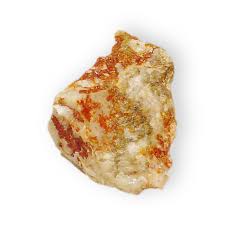Jarosite:

A recent study by a team of researchers from India has explored jarosite samples from Kachchh, Gujarat, a region with terrain conditions similar to Mars.
- Jarosite is a yellow-brown mineral composed of potassium, iron, and sulphate, commonly found in arid, saline environments.
- The study aimed to assess whether jarosite can act as a “natural clock” on Mars by tracking geological events through radiation-induced luminescence.
- The researchers collected six jarosite vein samples from Kachchh and examined them in a lab using a process based on luminescence dating.
- Luminescence refers to the light emitted by minerals when they release energy stored from natural radiation over time.
- The process involved:
- Washing grains with weak acid to enhance brightness.
- Irradiating, heating, cooling, and repeating the cycle to analyze luminescent properties.
- The team observed four distinct luminescent emissions at 100°C, 150°C, 300°C, and 350°C, even after heating the samples up to 450°C, indicating thermal stability.
- The Kachchh region in Gujarat was selected due to its extreme aridity and salinity, resembling Martian terrain conditions.
- This made it an ideal analog site to test the behavior of jarosite under extraterrestrial-like environments.




